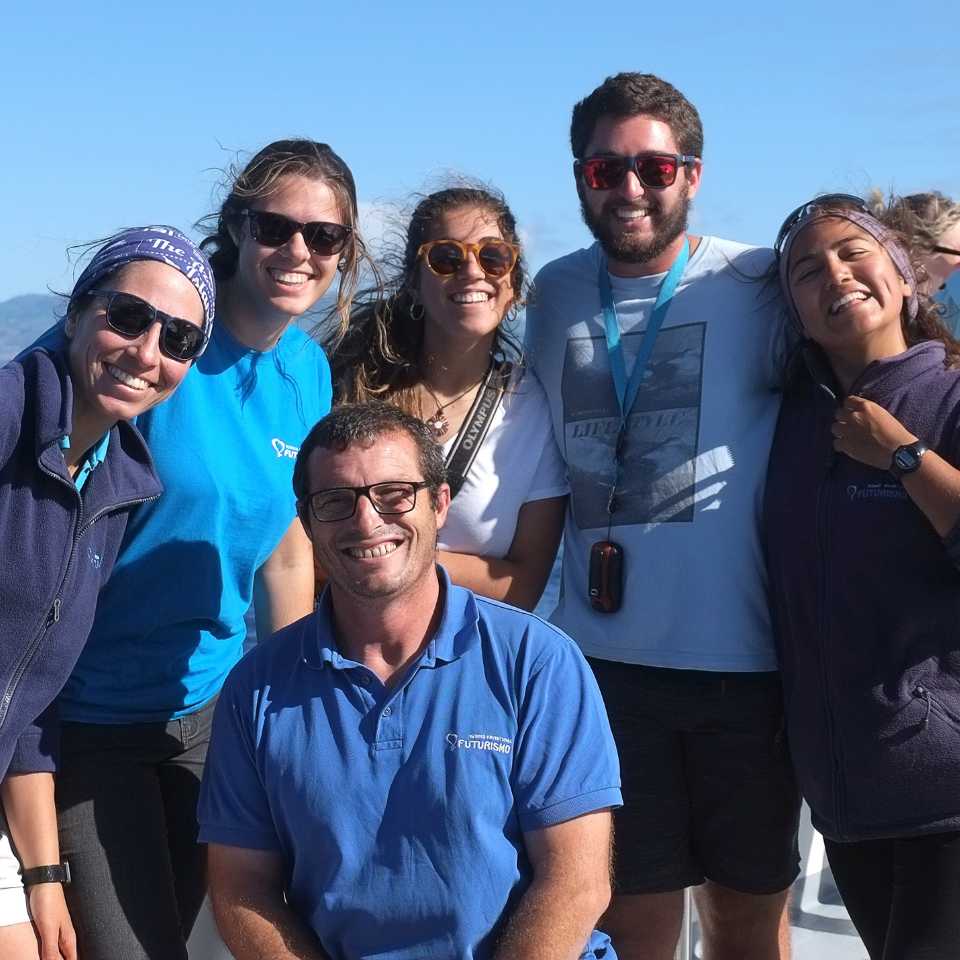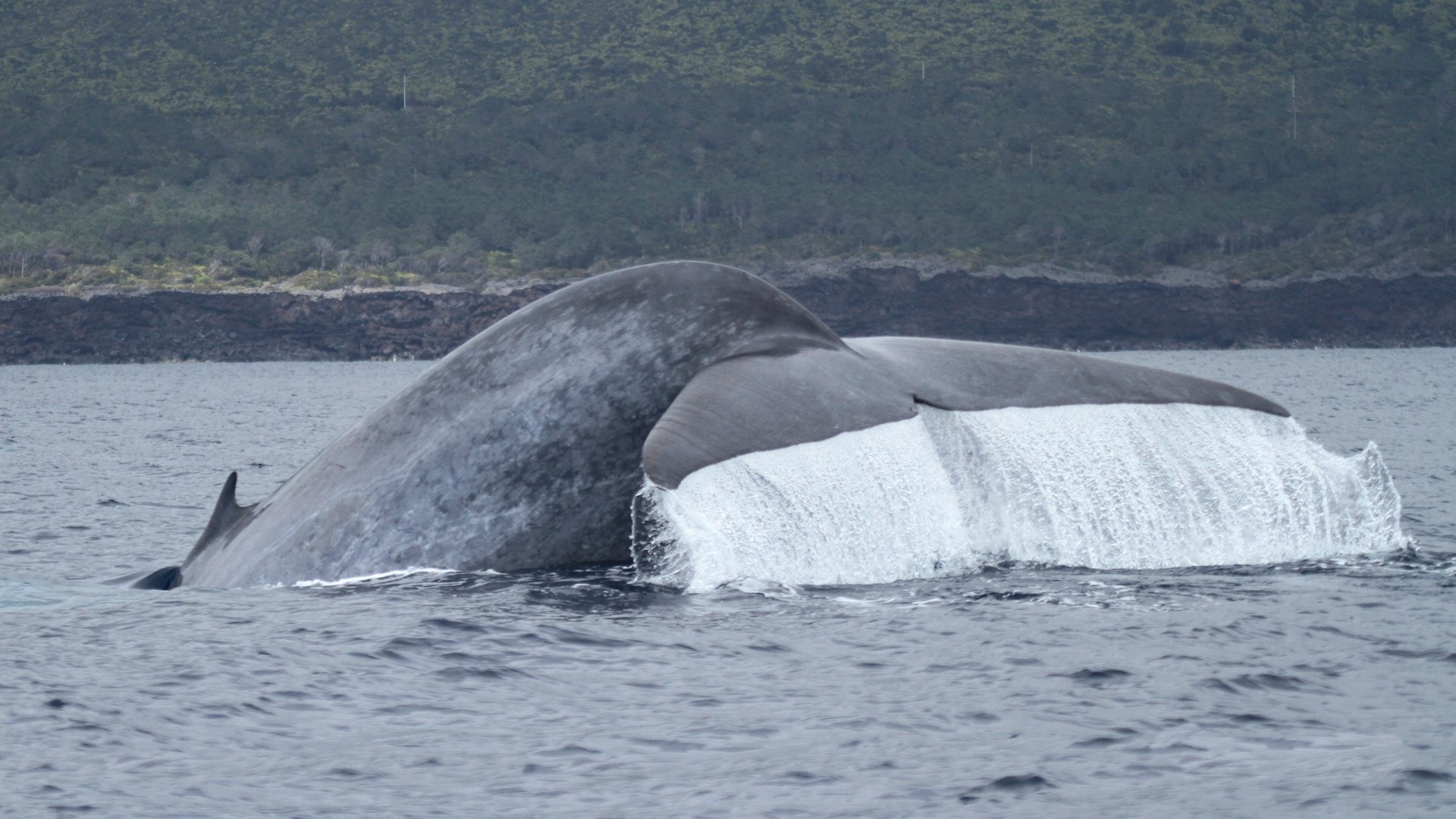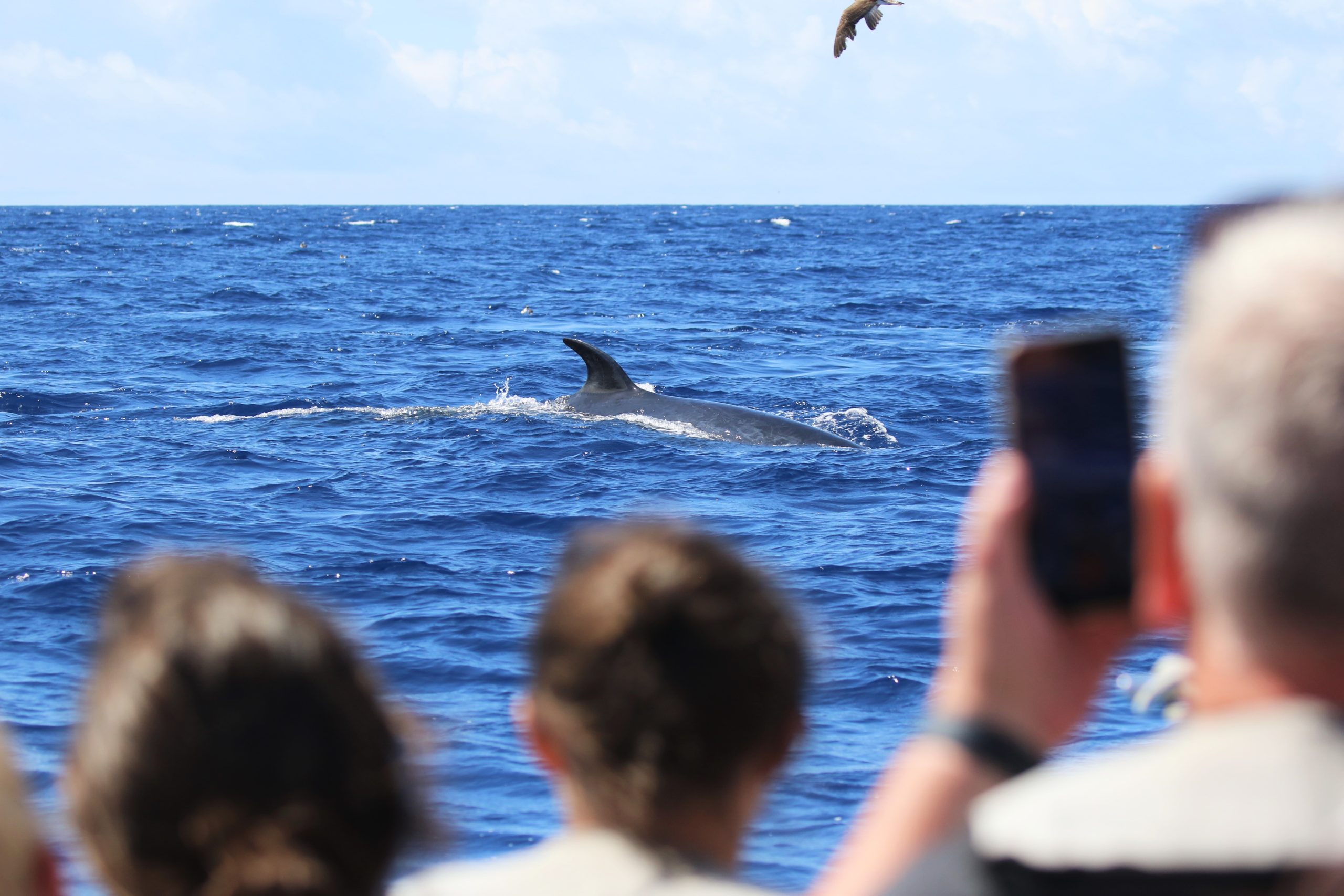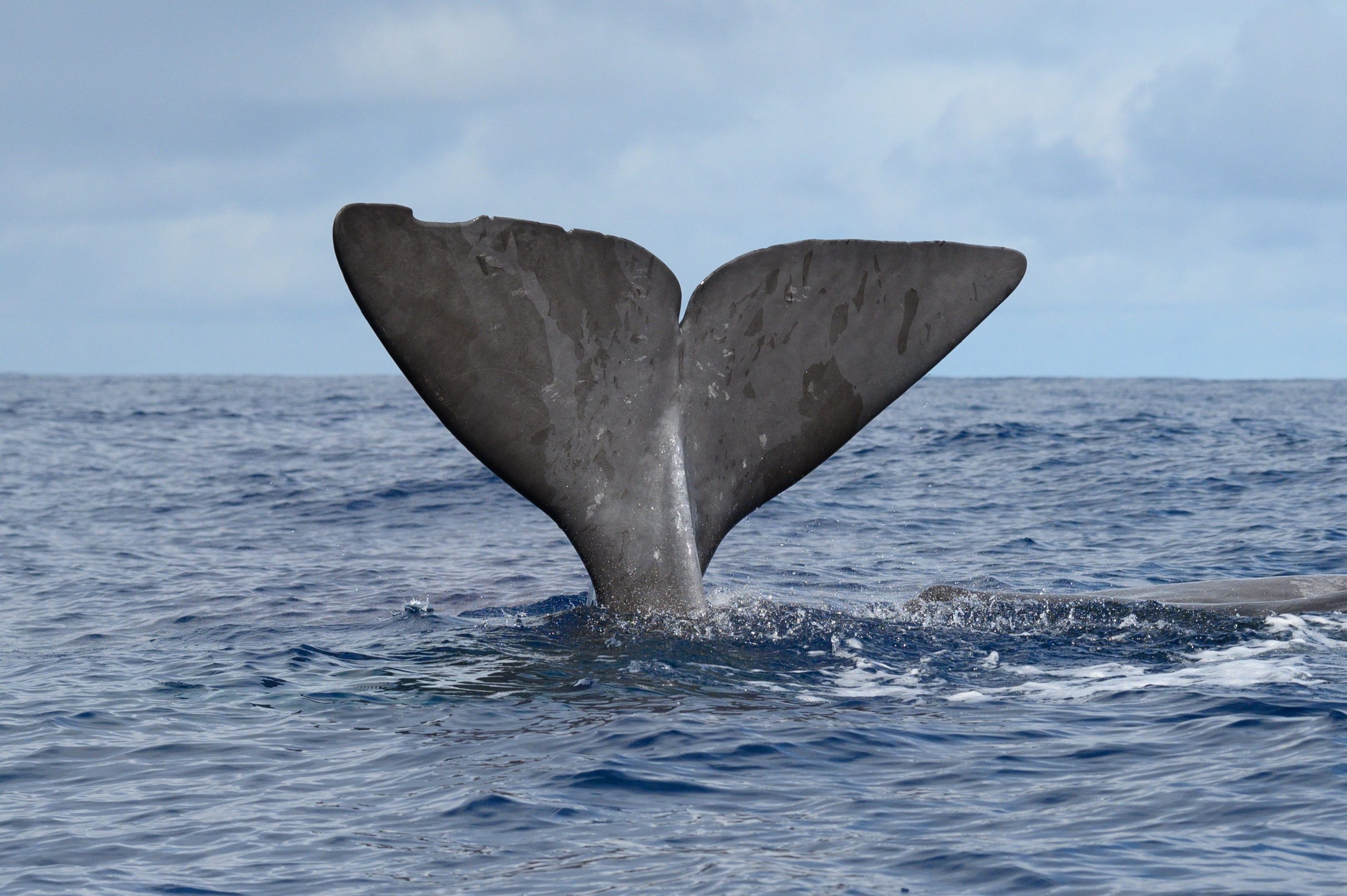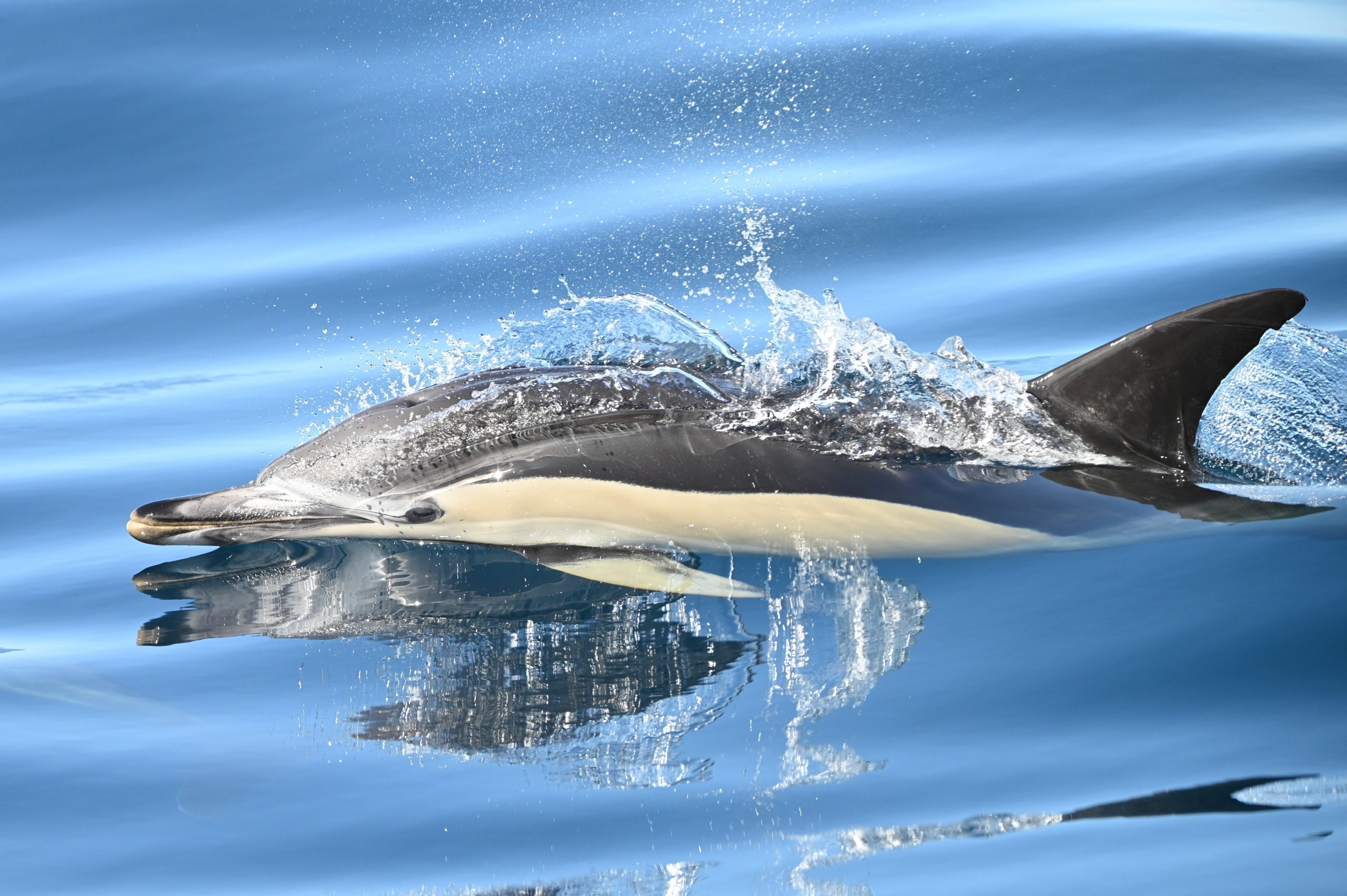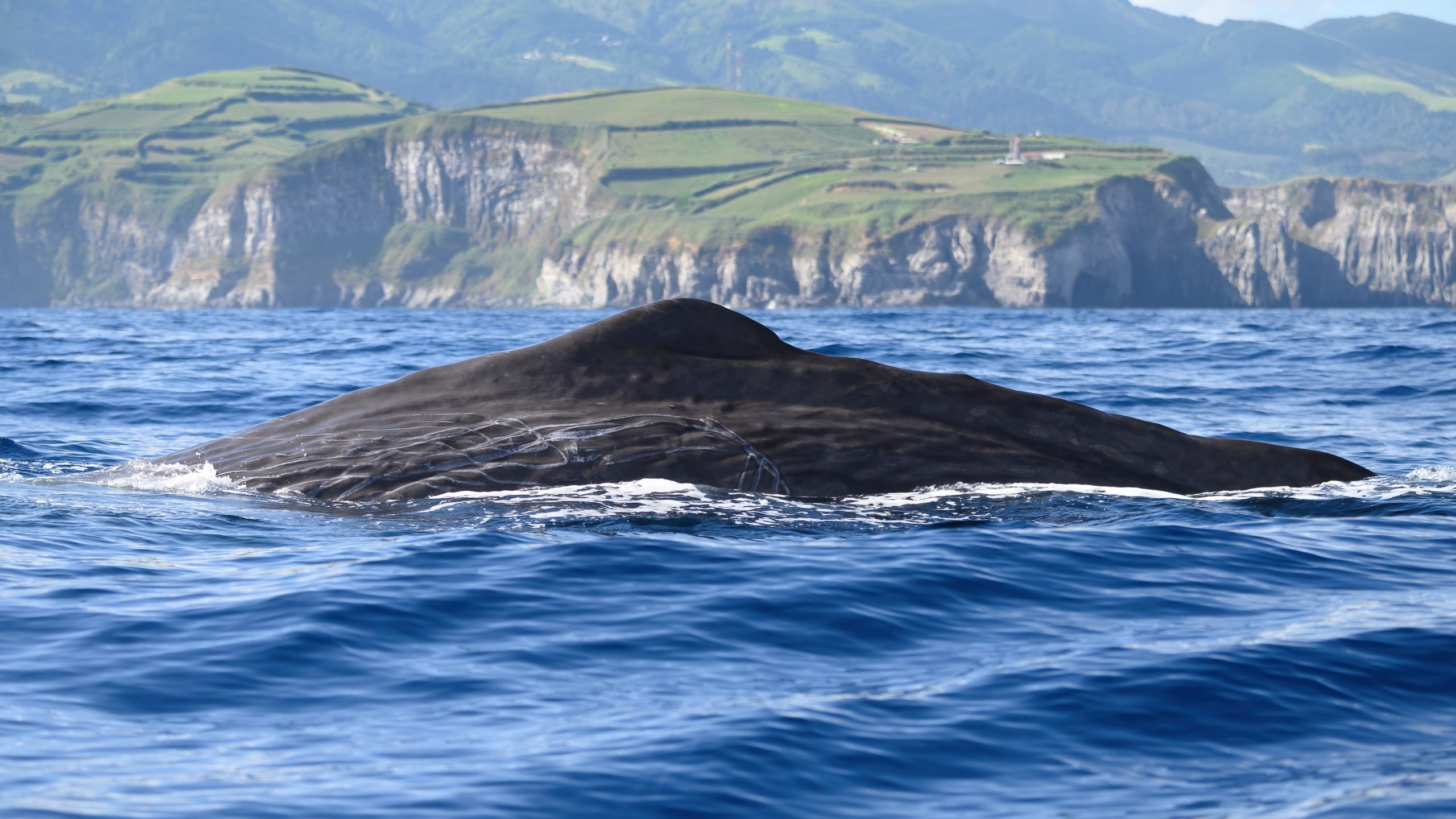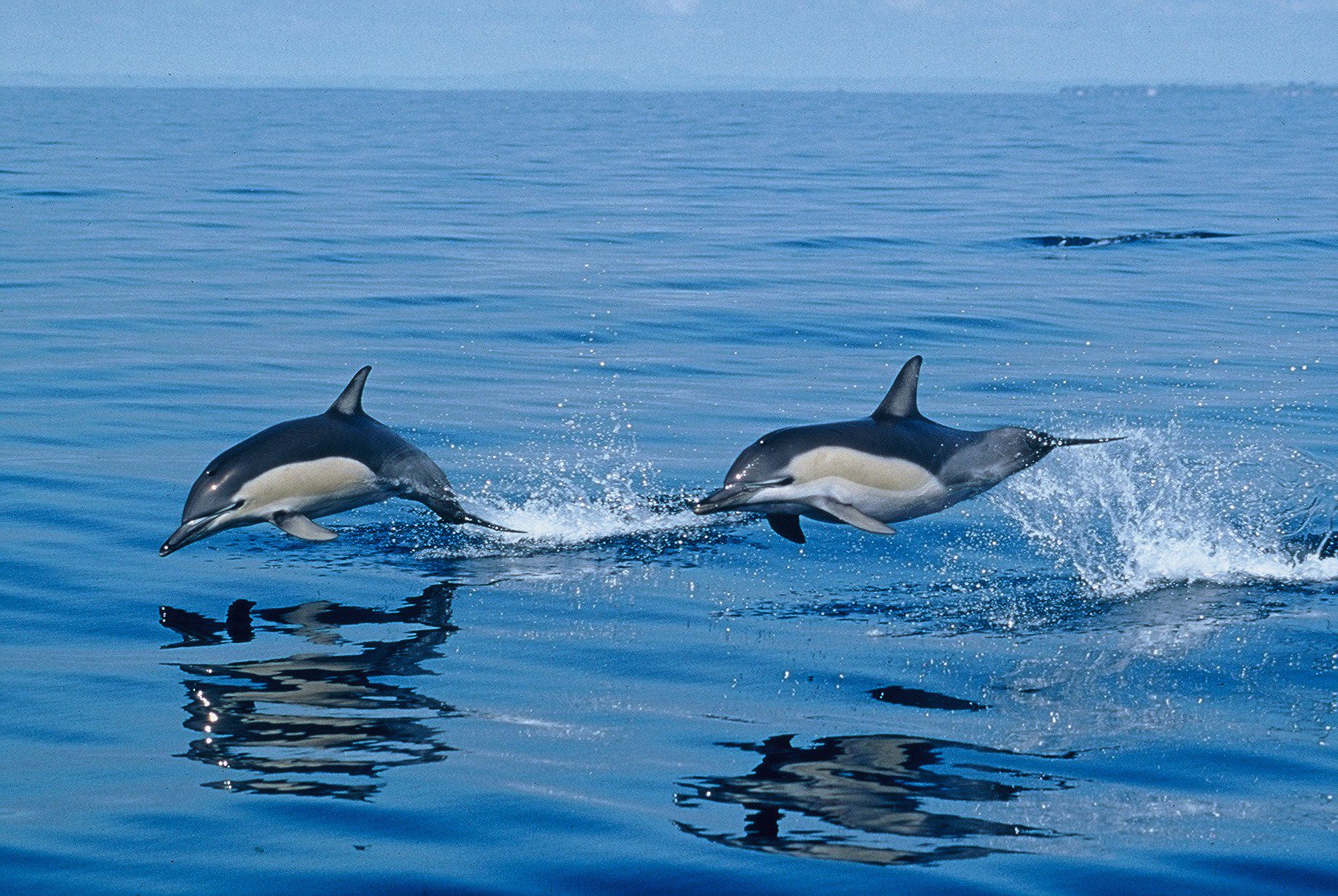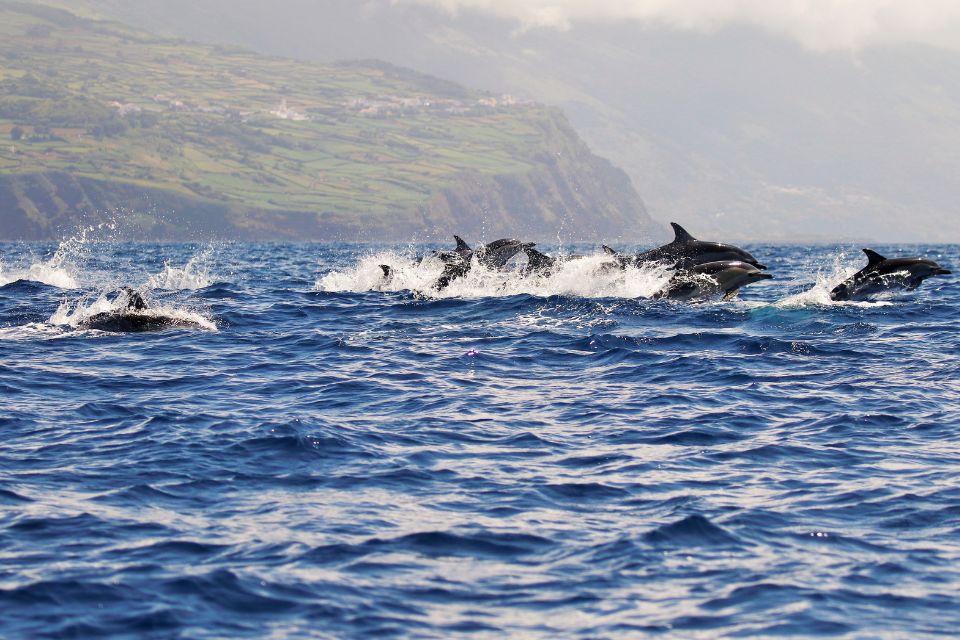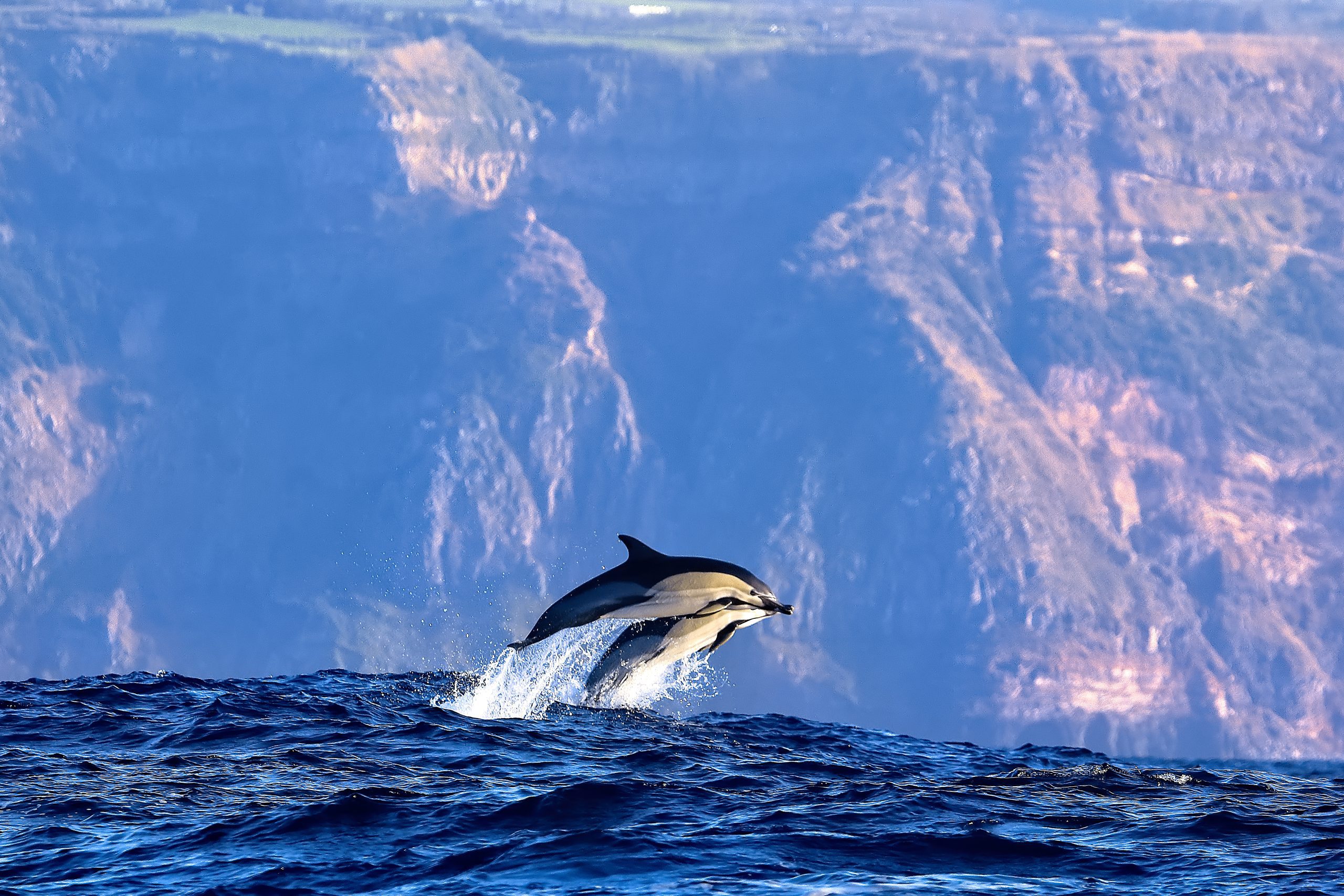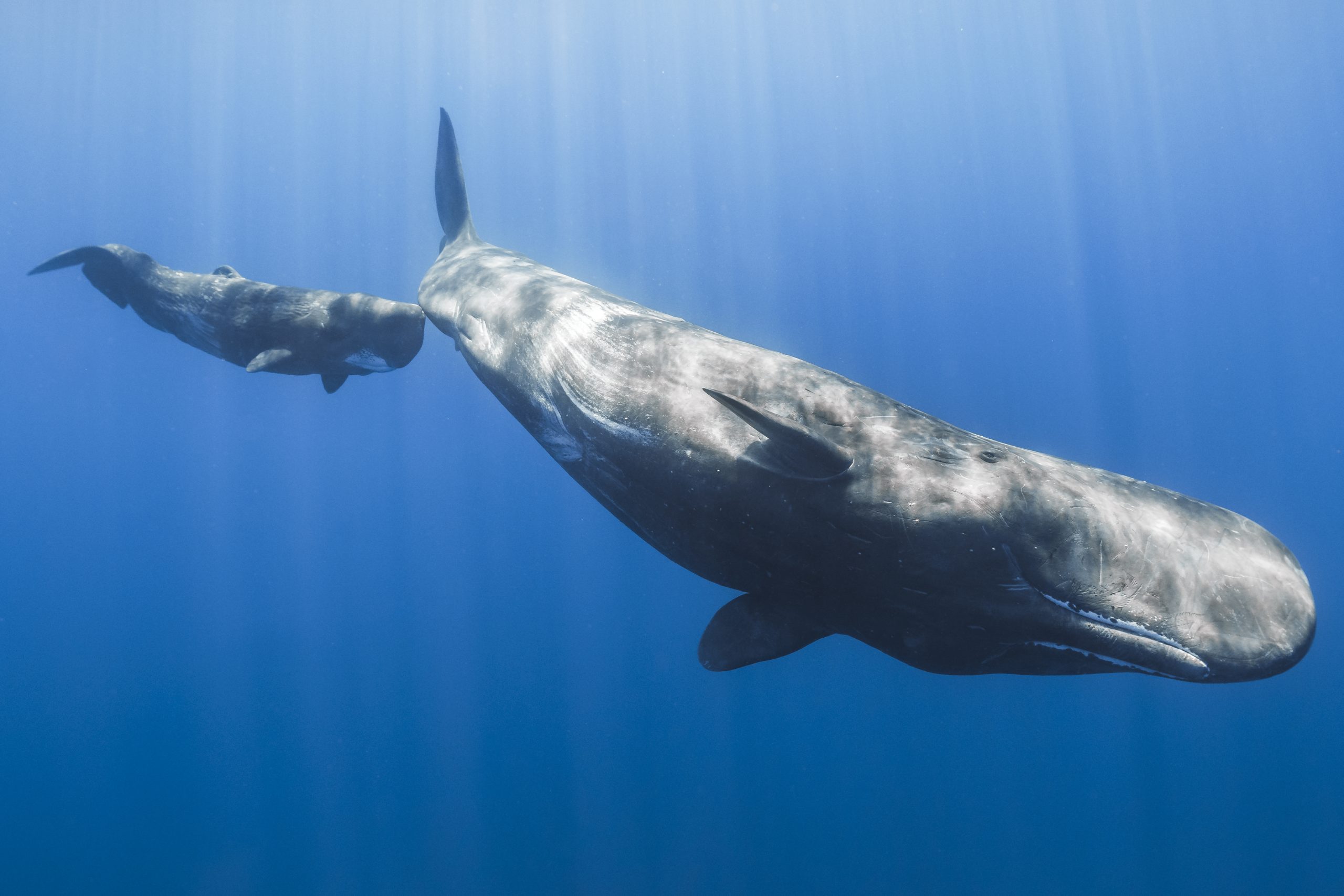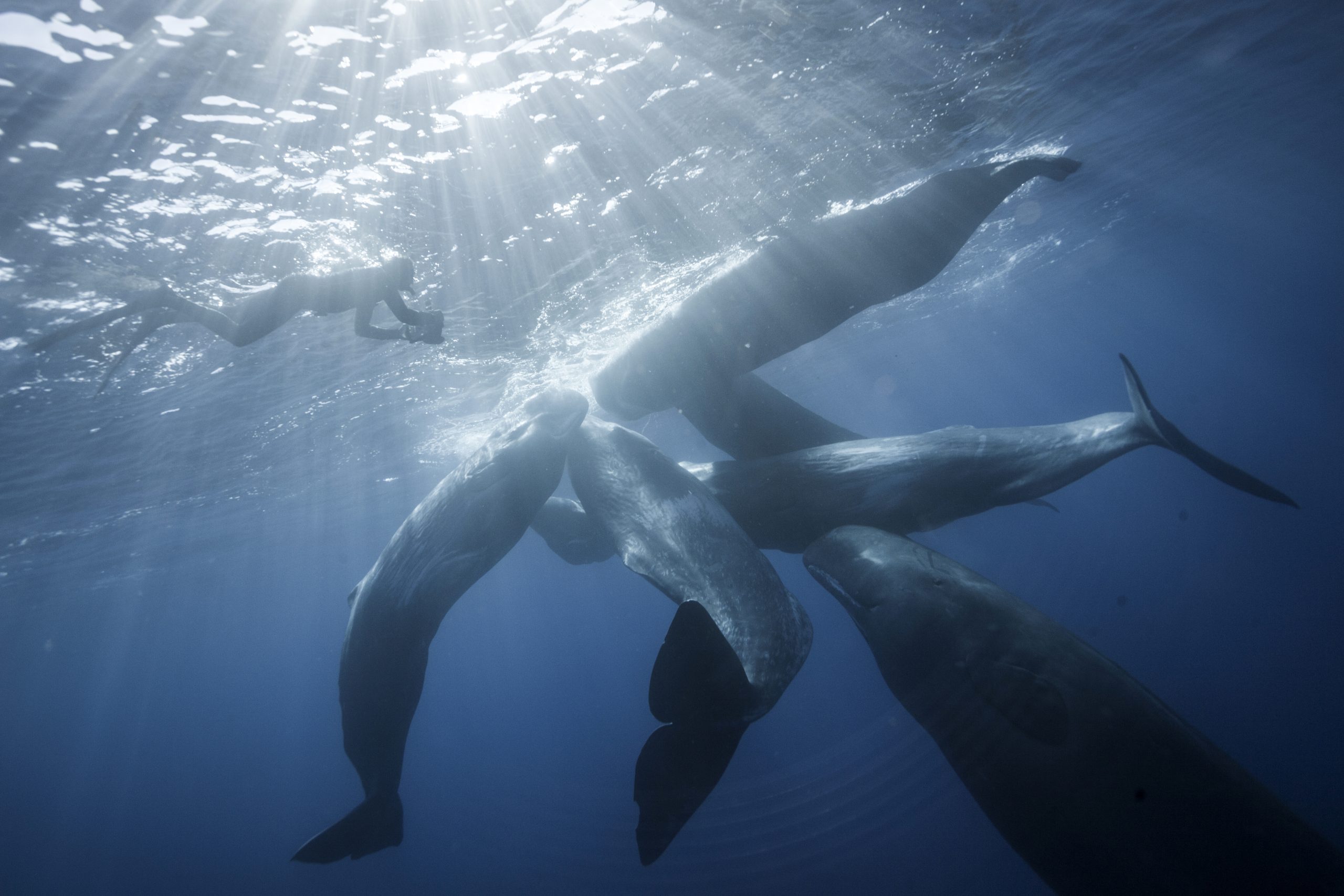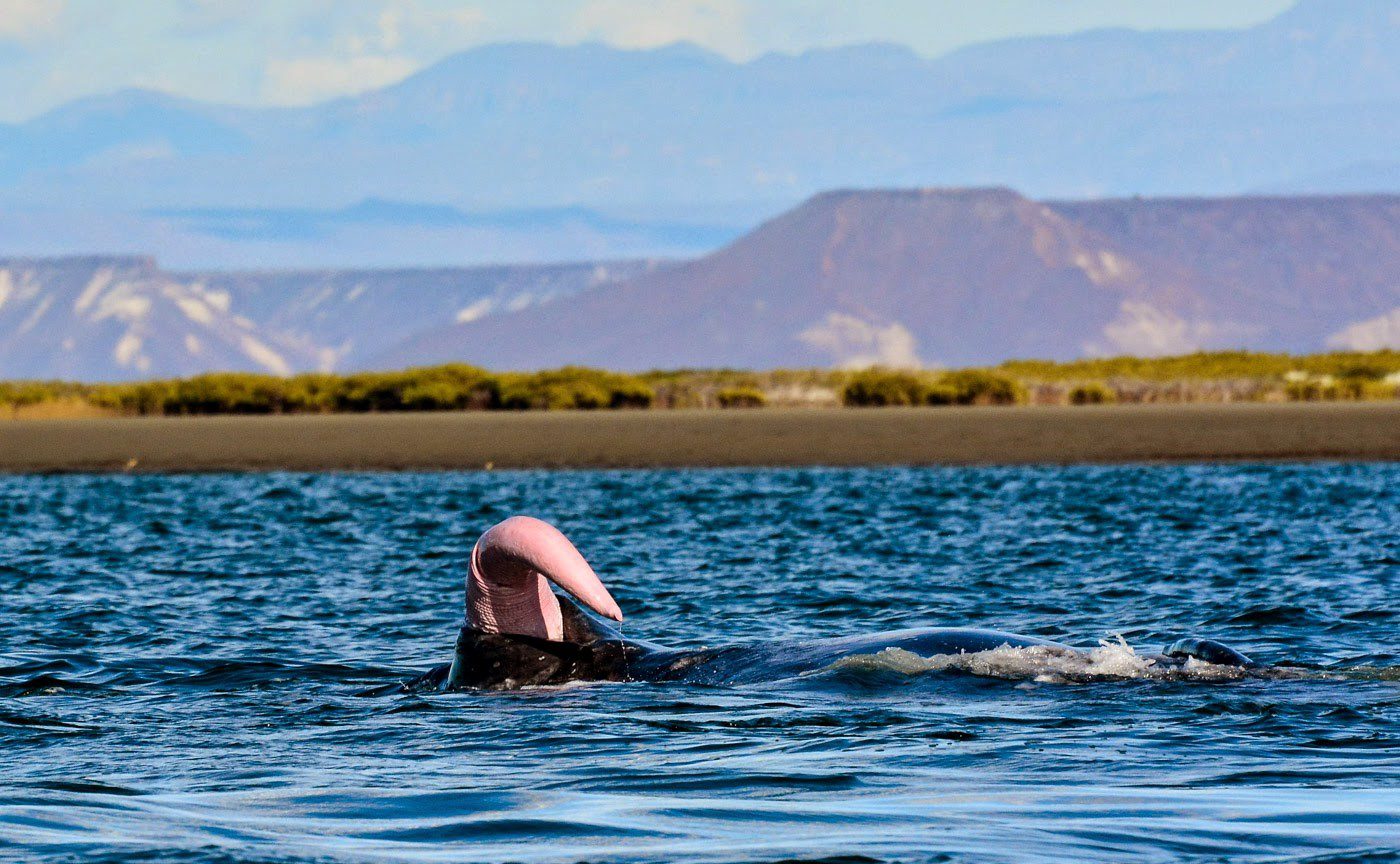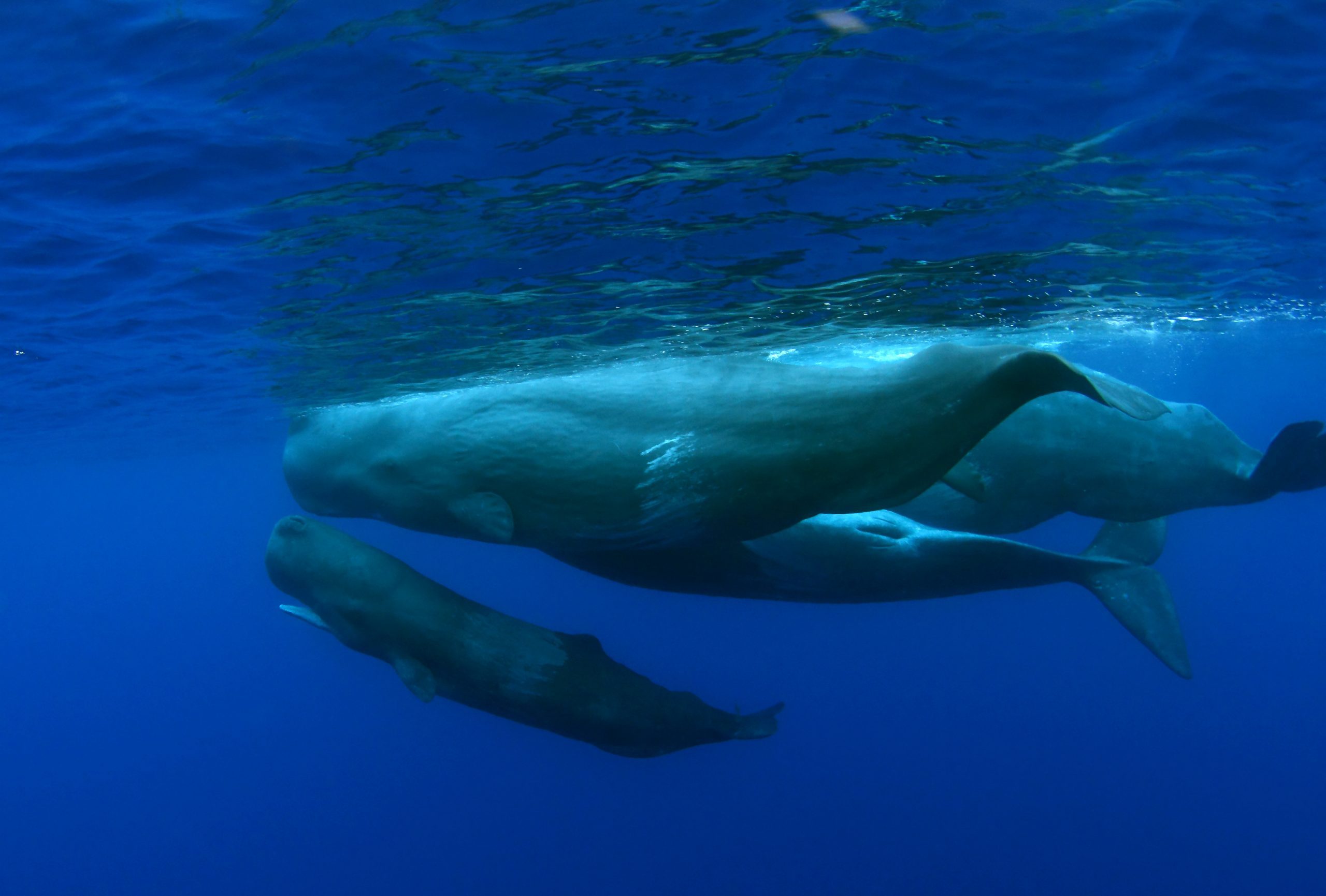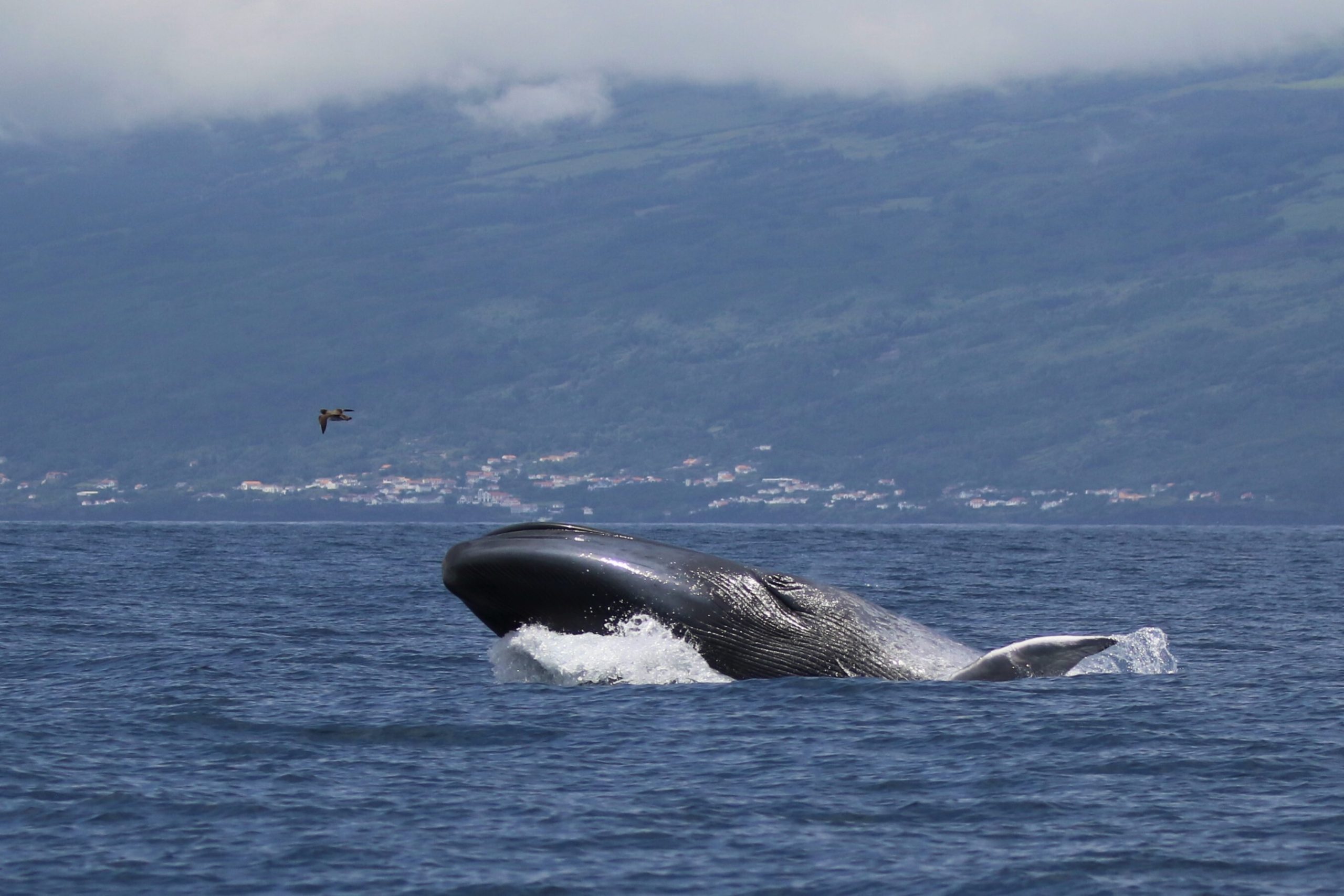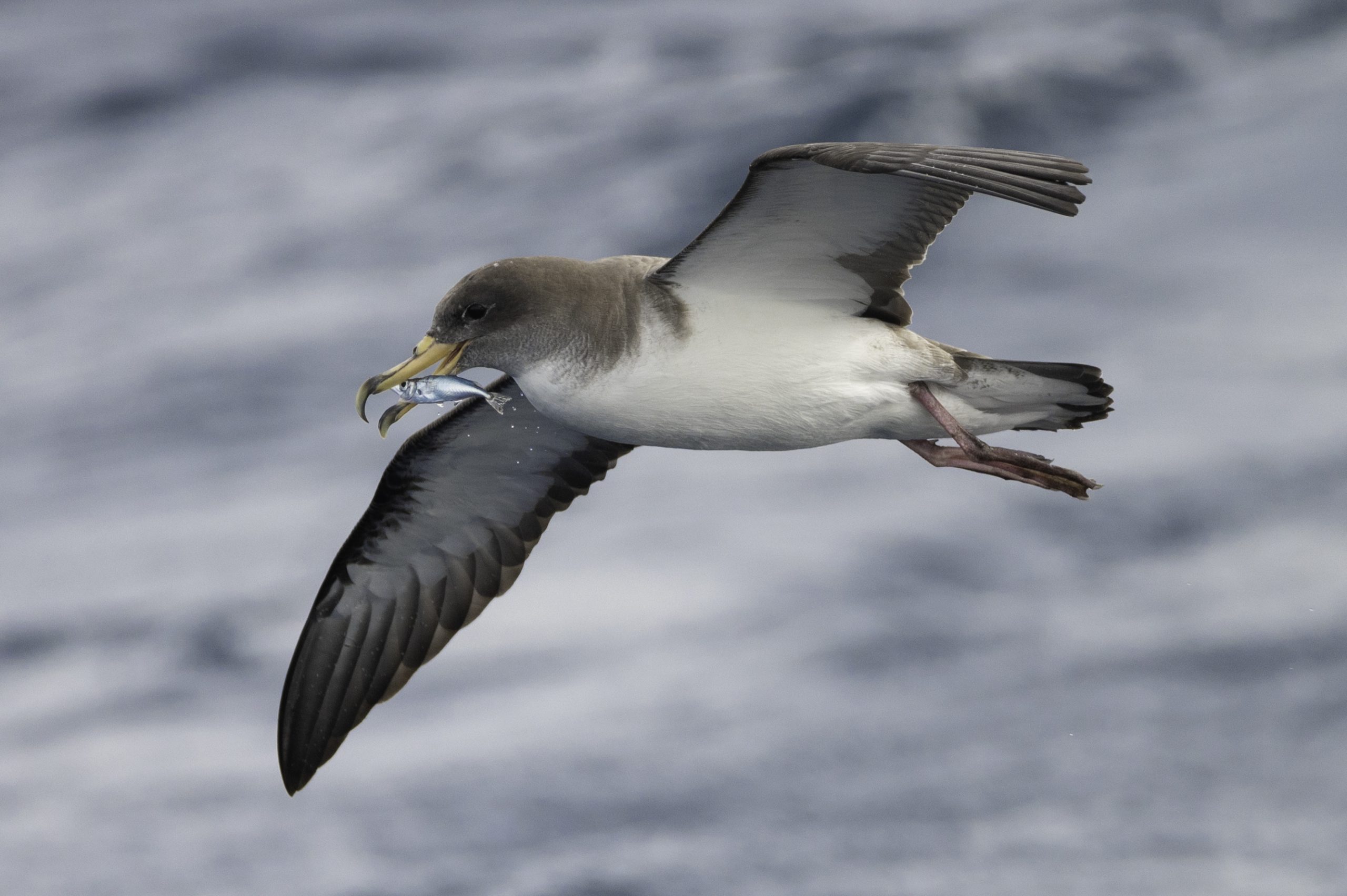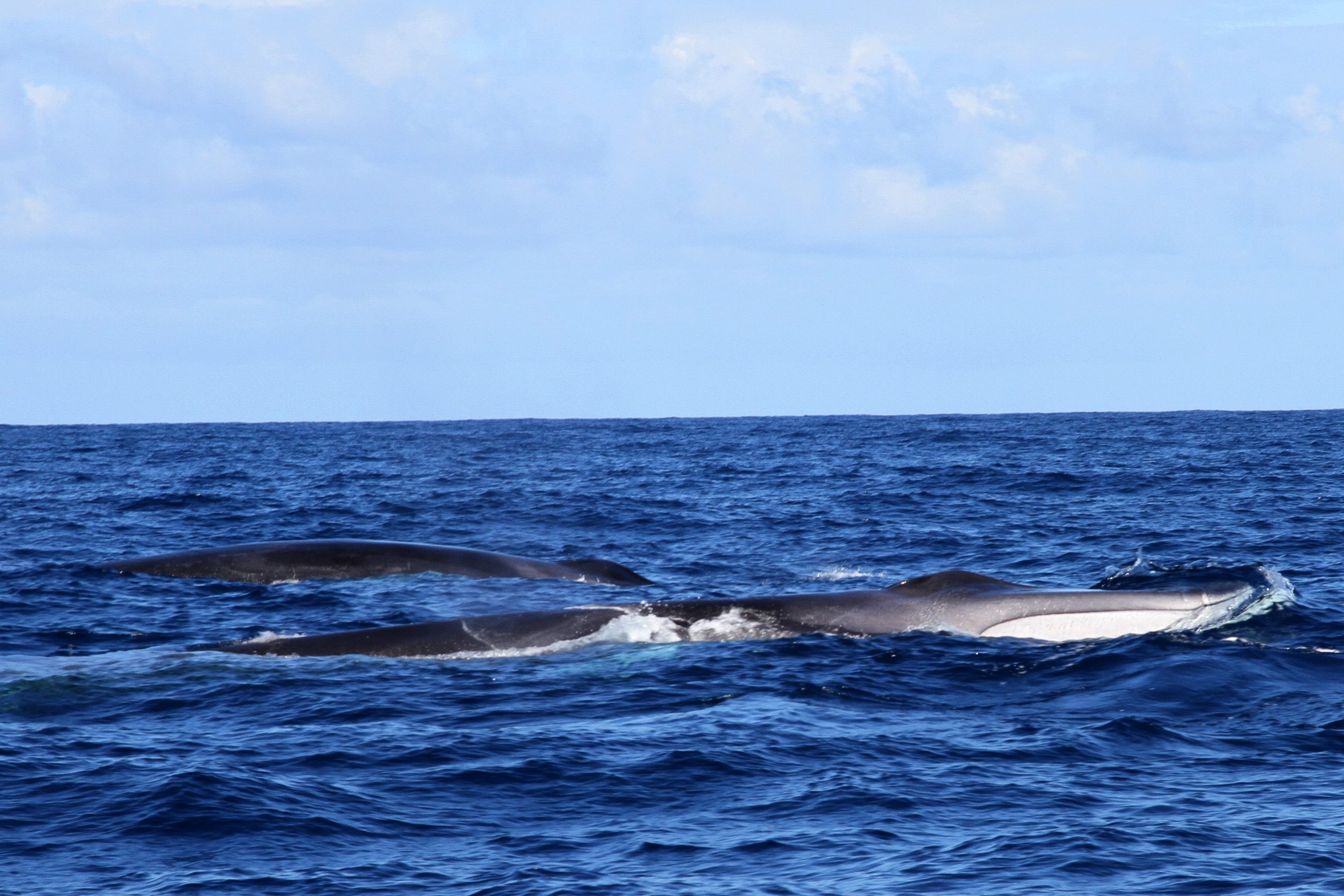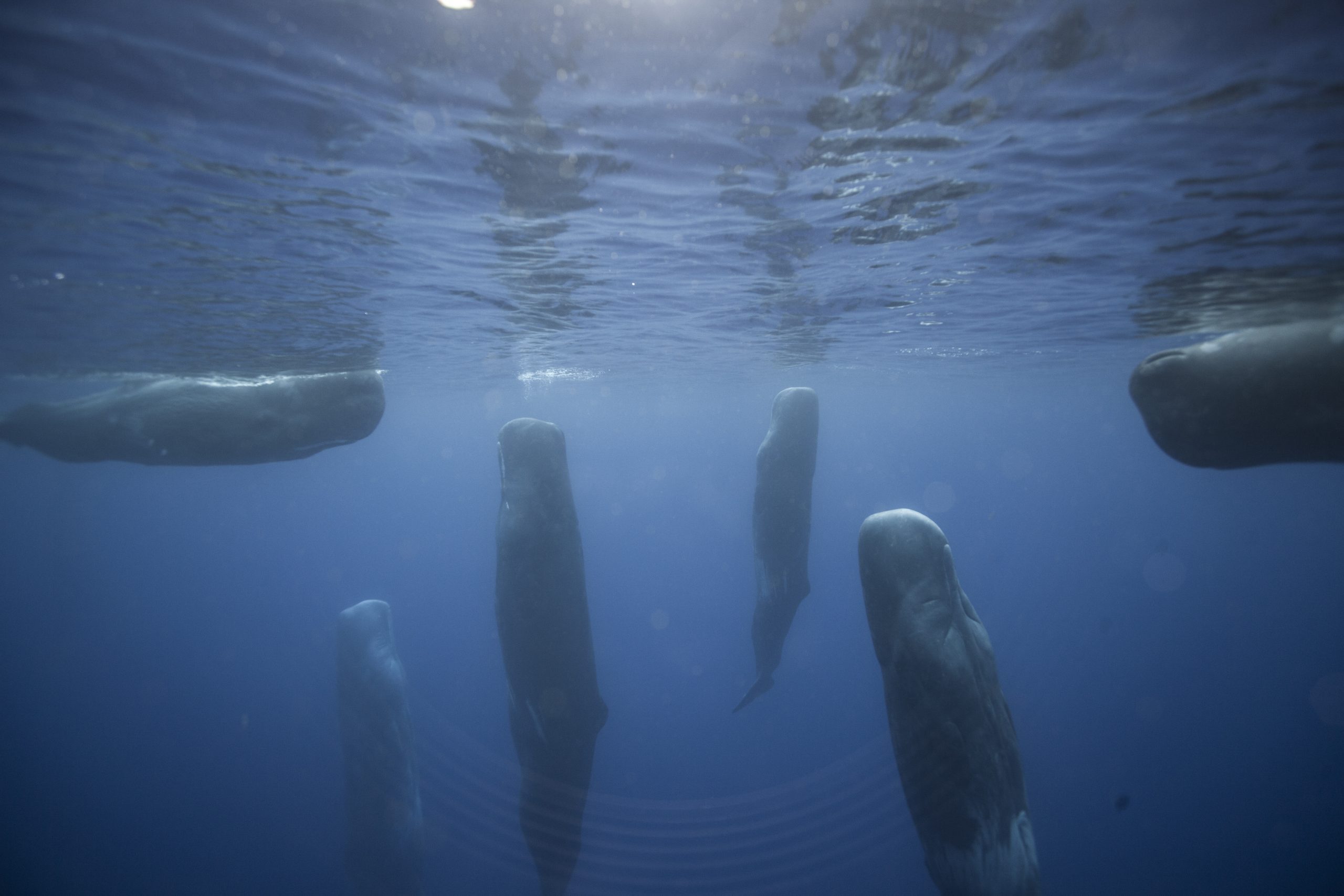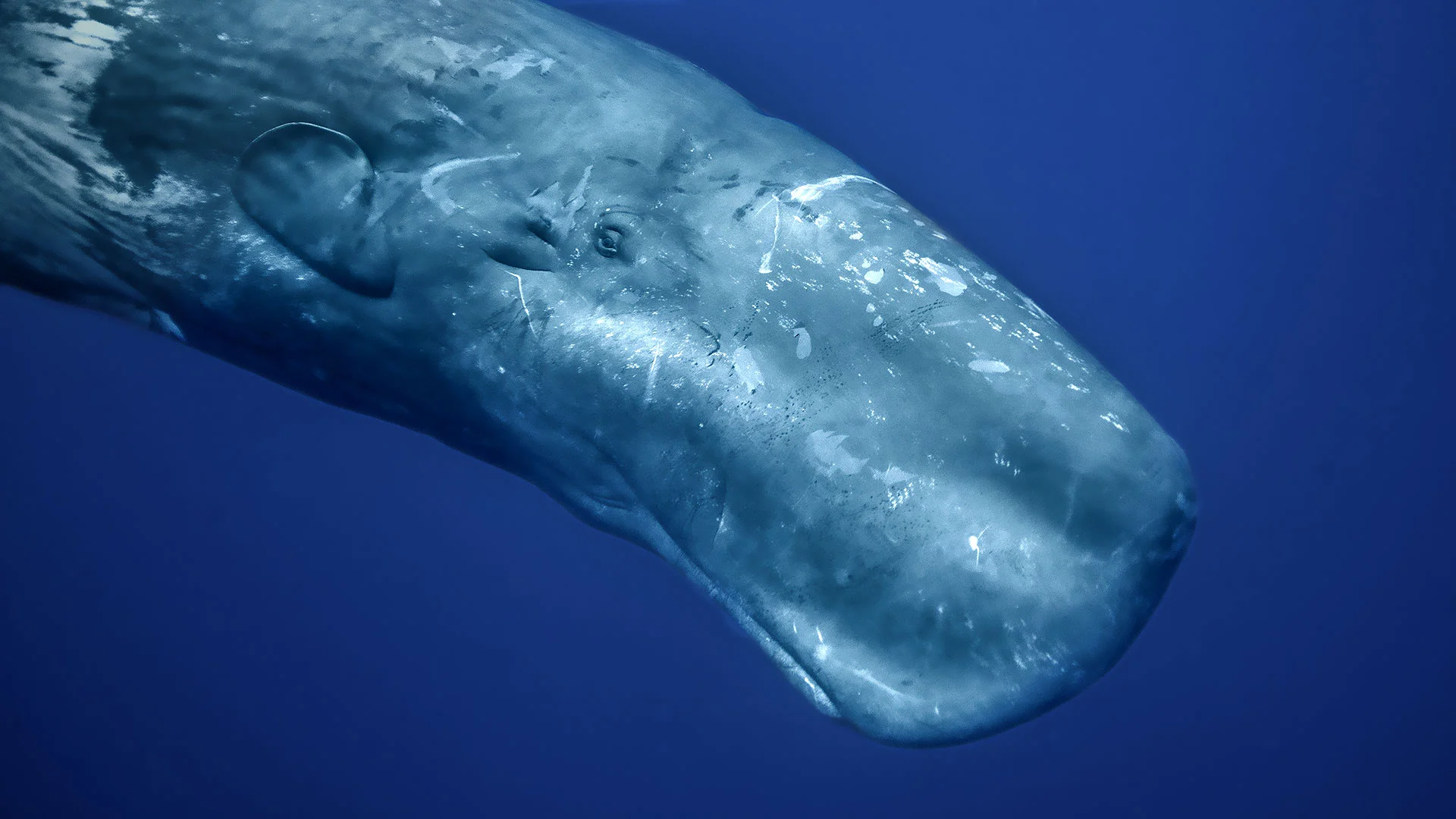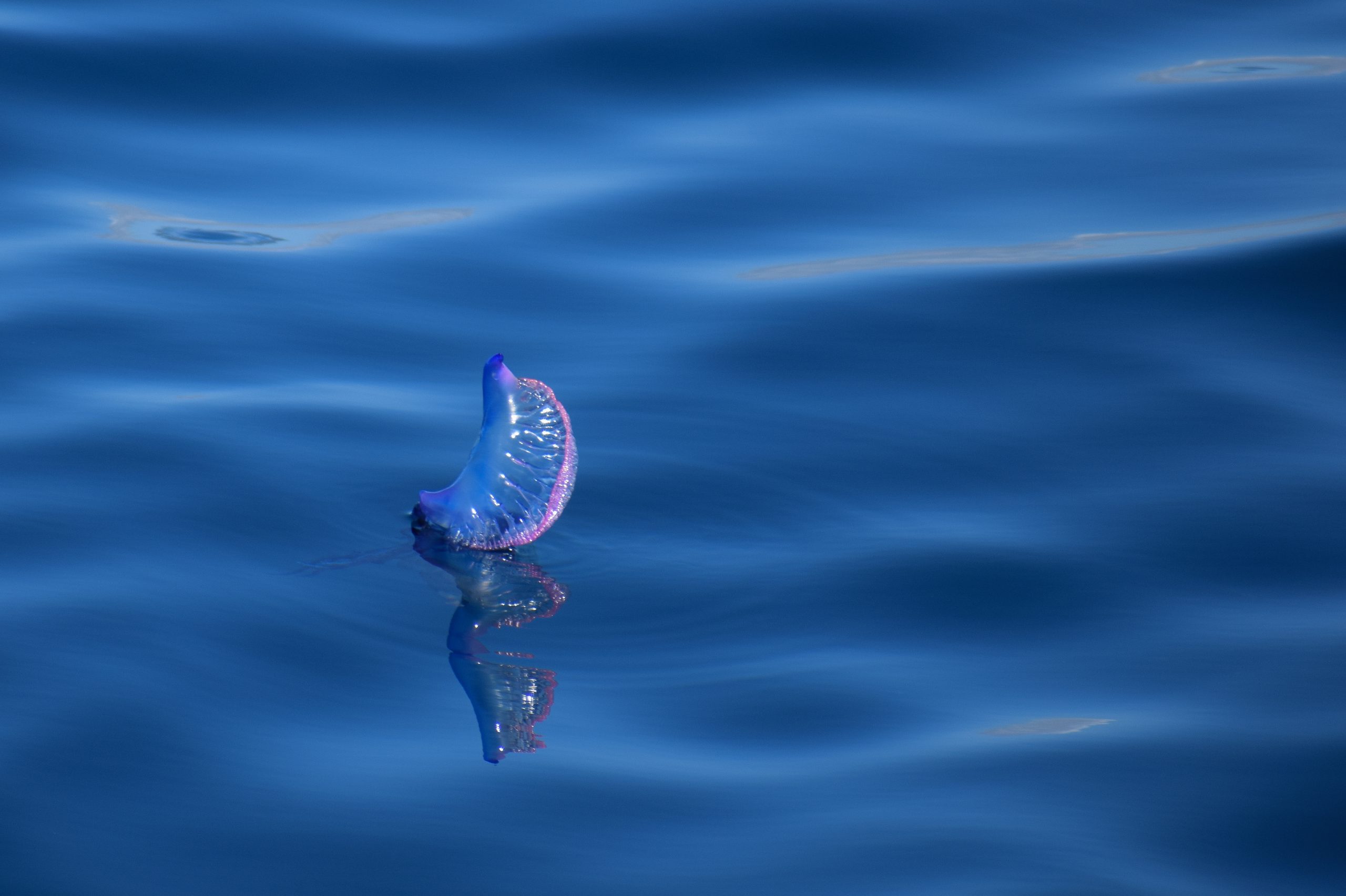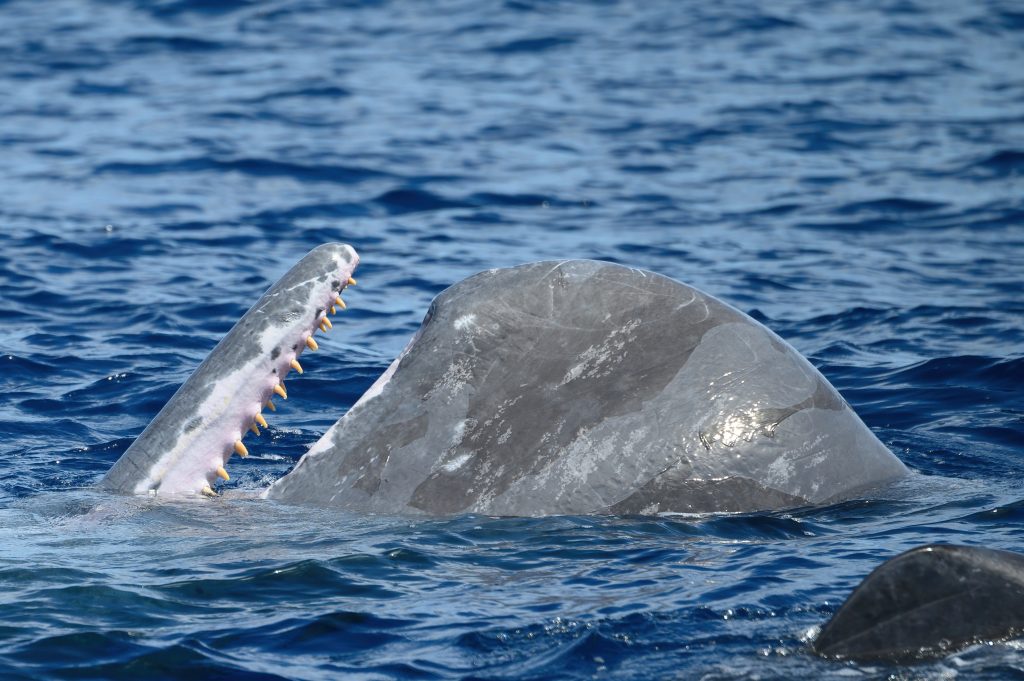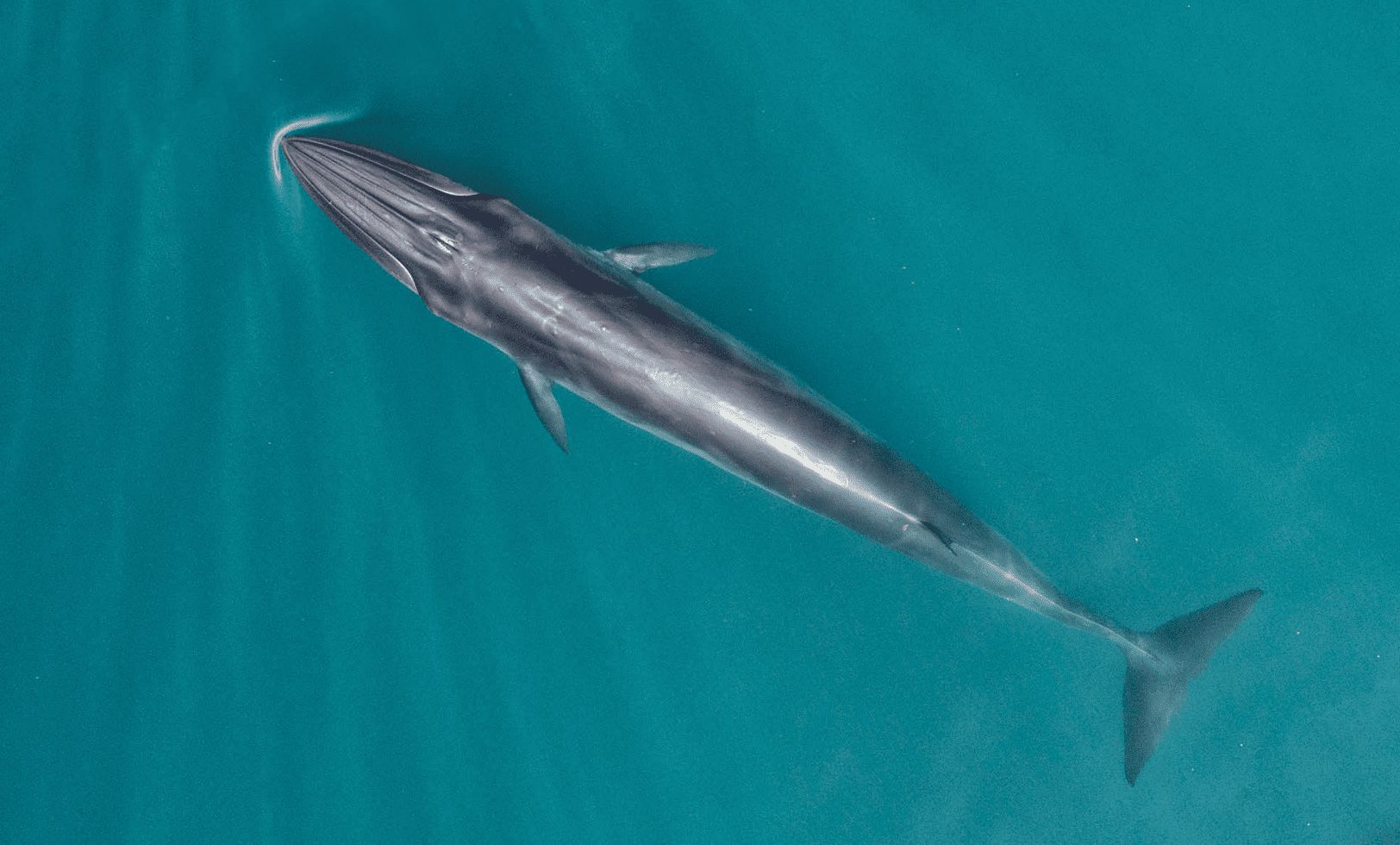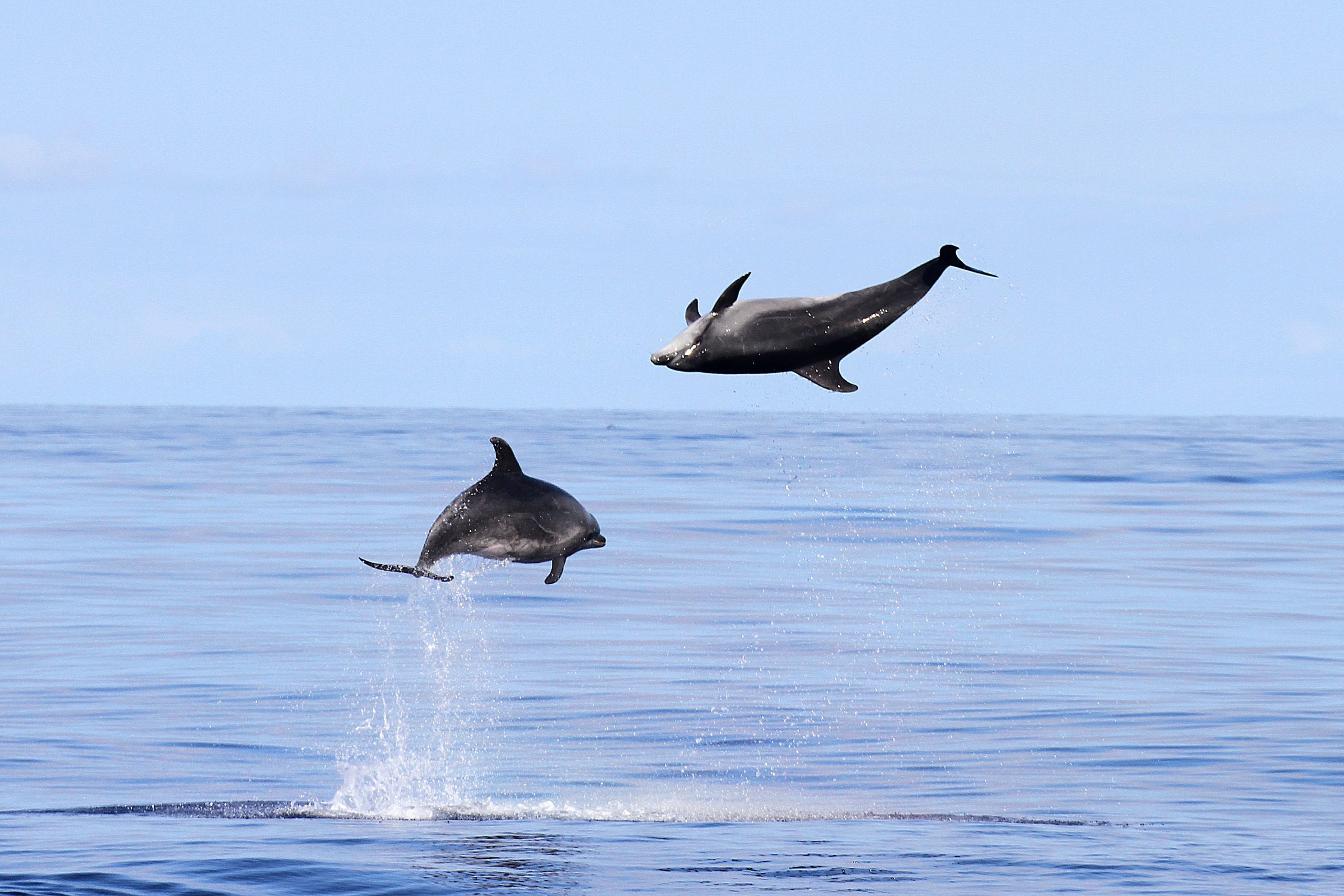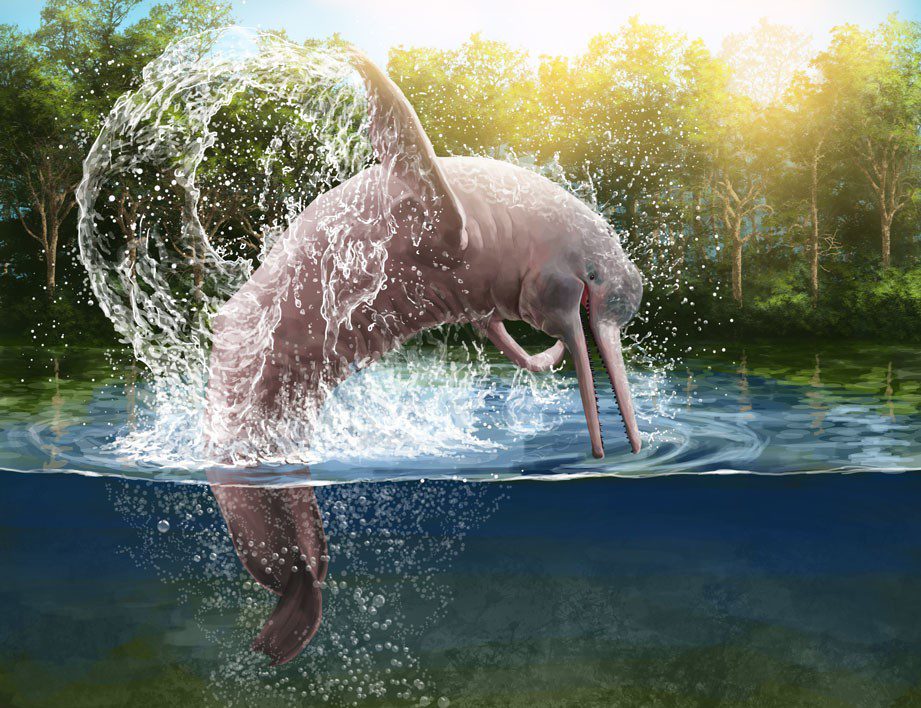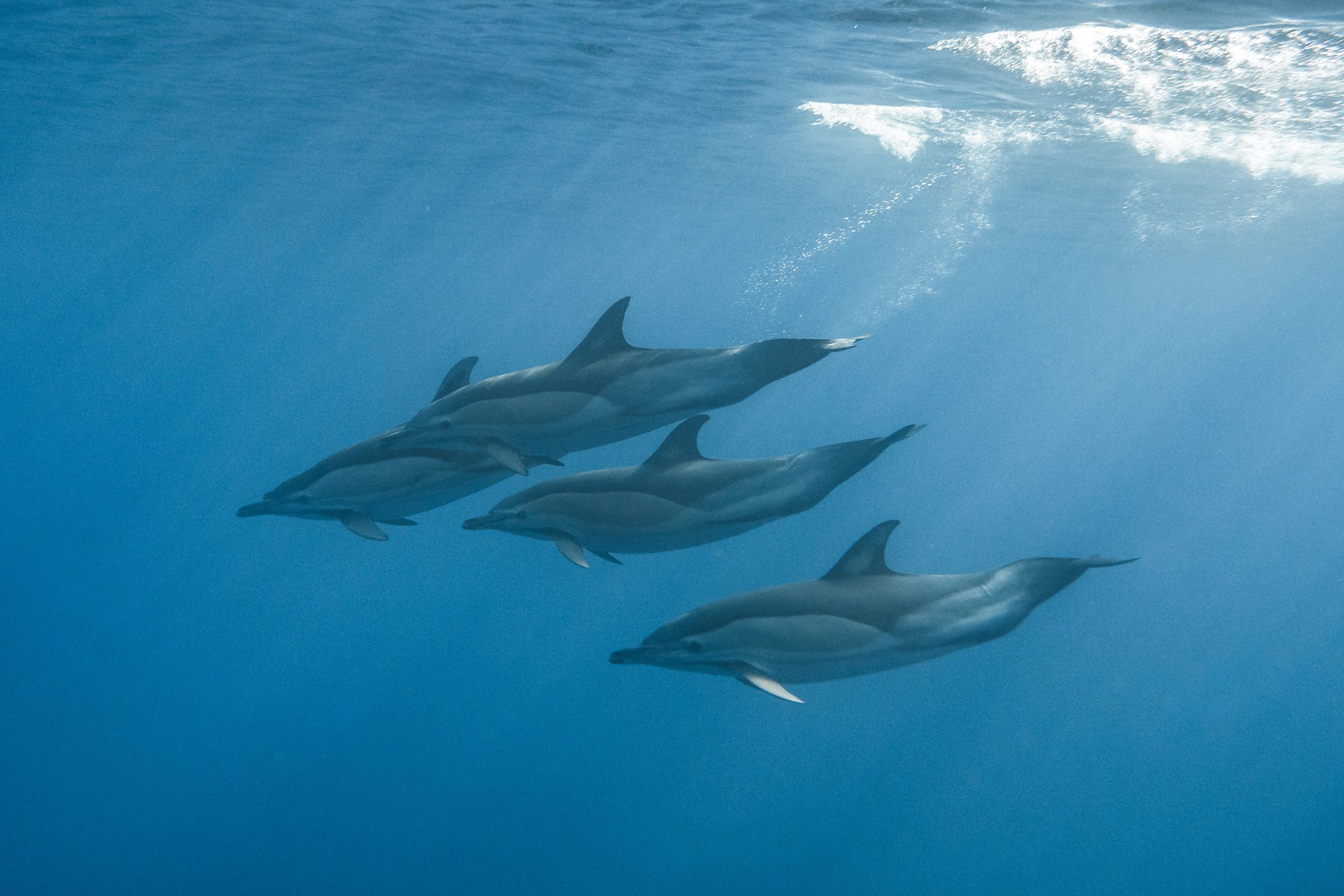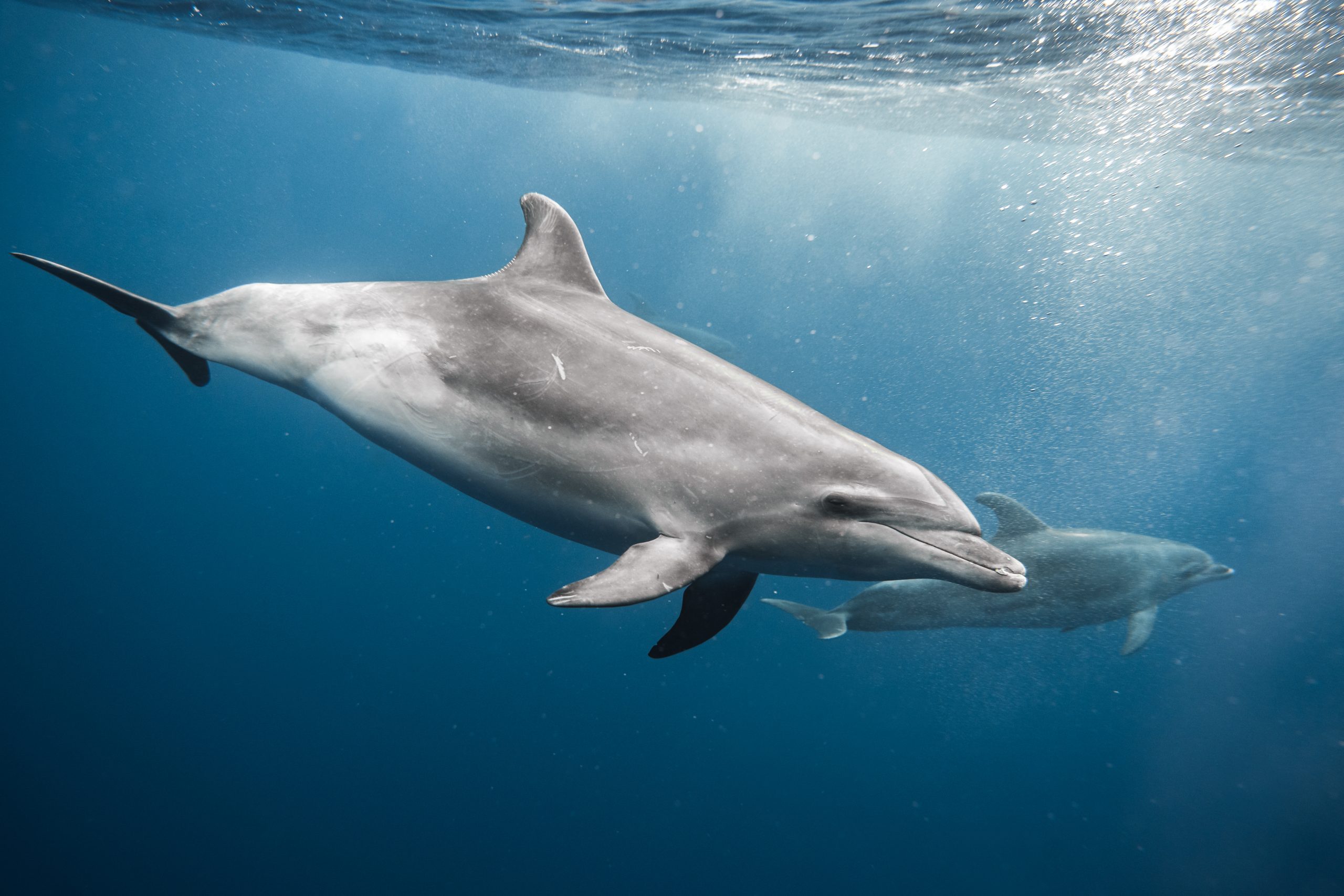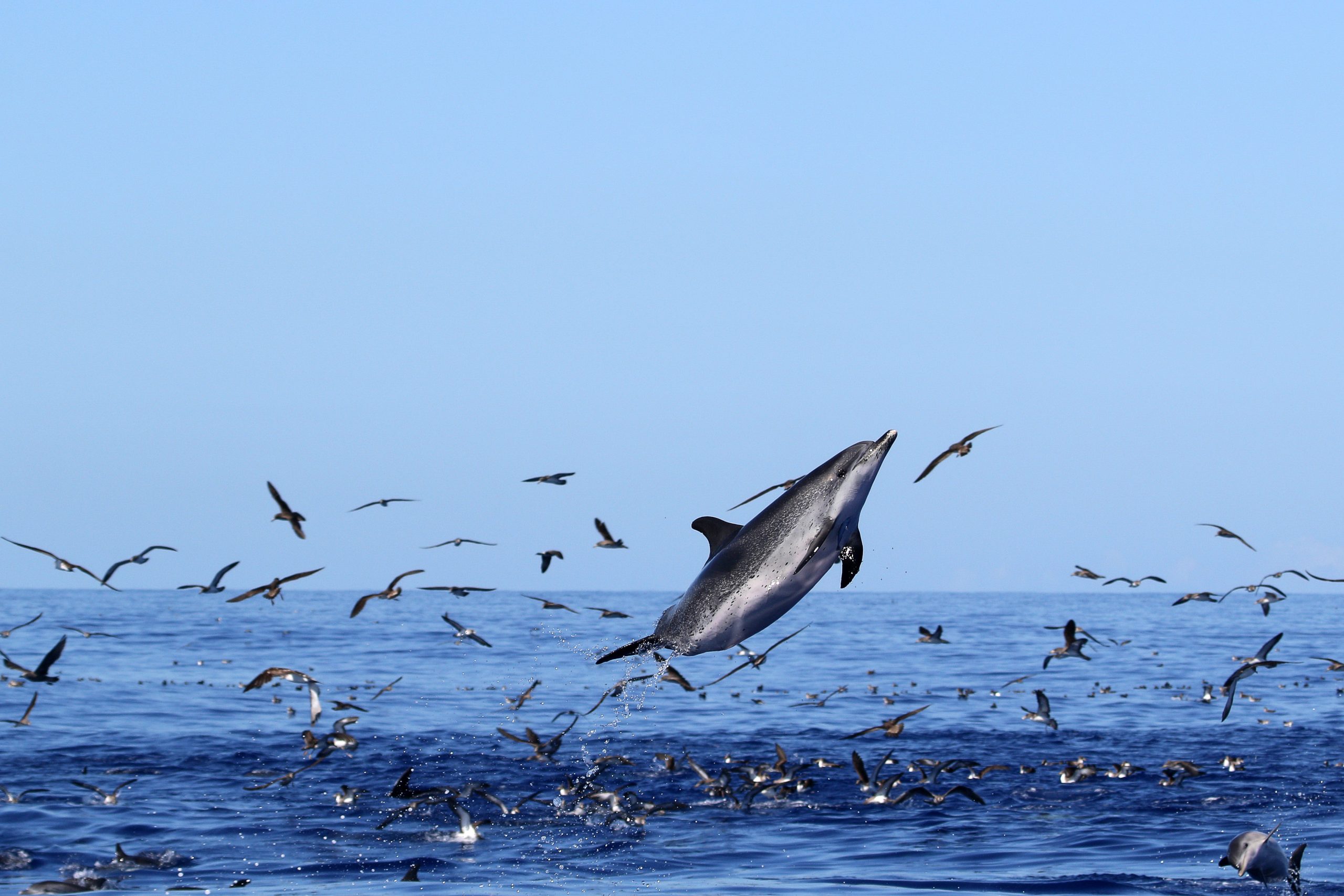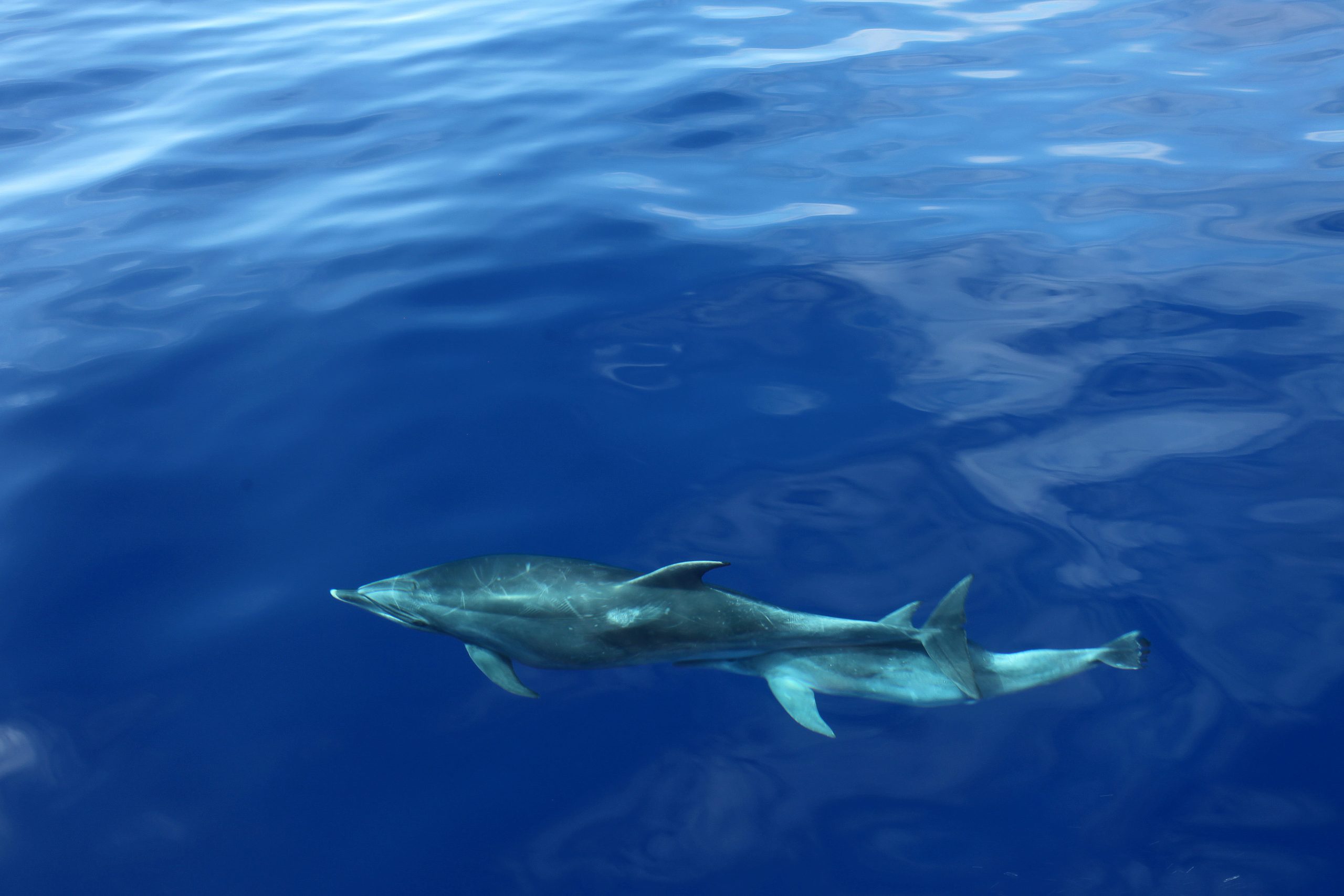One of the most interesting topics in regard to cetaceans is the way these animals manage to communicate underwater. It is even more challenging in a world where vision and smell are difficult because of unfavorable conditions. So let’s see how do whales and dolphins communicate in those conditions.
Scientists consider whales and dolphins to be some of the smartest animals on earth. They show various signs of culture, teaching their young behaviors that are essential for survival (Bender et al., 2009). Communication is therefore a key component of these animals’ social lives and one of the proofs of their high intelligence.
How do Dolphins Communicate?
Dolphins communicate through the emission and reception of sounds. Each dolphin develops its distinctive sound within the first years of life.
All individuals produce a unique sound, which is different from the others so they can identify each other, it is like us humans with our names. On our trips, you can listen to their sounds quite often!

But, also dolphins use different behavior or body language to communicate with each other. In almost all of our tours we can observe some of this dolphin communication, like the following:
Postures
The body positions sometimes can demonstrate anger or aggression in dolphins. For example, what is called the S-posture normally is used in two specific social contexts: courtship and aggression. Male dolphins fight with one another for many reasons, including over resources such as food, space, females, or to establish societal dominance or rank (Waal & Harcourt, 1992).
Touch
The skin of these cetaceans is very sensitive to the touch. If they are in a good mood, then they can make physical contact with the flippers by pressing them against the flippers of another dolphin (Azevedo, A et al 2010).
Similar Articles - Do whales and dolphins lay eggs? | Scientific Approach - How do dolphins mate? | Scientific Approach - How Fast Can Whales Swim | Scientific Approach - Is the Fin Whale endangered? | Scientific Approach - Portuguese Man-o-war (Physalia physalis): Everything You Need to know | Scientific Approach - What is a Group of Dolphins called? | Scientific Approach - What Do Dolphins Eat | Scientific Approach
Tail Slapping and Flipper Slapping

It is a vertical blow of the tail or the flipper against the water surface that sometimes indicates aggressiveness, but it can also express the desire to leave the area where they are, or ask for the attention of the other dolphins (Azevedo, A et al 2010; Herzing, 2000).
✨ Related articles: How do Dolphins Mate? | How do Dolphins Sleep? | How do Whales & Dolphins Communicate? | How is a Group of Dolphins called? | Top-3 Facts & Curiosities about Dolphins | What Do Dolphins Eat?
Bow-riding

Perhaps this is the most common behavior that our tourists can see in our tours. Dolphins approach our bow and are propelled by the vessel’s waves. Dolphins have learned to harness this “free” energy and take advantage of the opportunity to rest. And at the same time, they are having a moment of fun.
Related Tour Whale Watching in the Azores. Check Tours!
Identification of body coloring patterns
Stains, stripes, and specks may indicate the health status or the age of dolphins’ companions.
For example, the skin of the Atlantic spotted dolphin (Stenella frontalis), which arrives at the Azores in the summertime, develops spots when they grow older, and the scars in the skin of the Risso dolphin, one of our resident species, (Grampus griseus) informs others of their combat skills and experience.

How do Whales Communicate?
The deep is, despite its quiet appearance, the realm of sounds, as they can travel in water four times faster than they do in the air. As a consequence, cetaceans are extremely sensitive to sounds, having three times more neurons responsible for sound perception than humans do.
They are also known to have the ability to hear up to 12 octaves, while in comparison, humans can only hear up to 8 (Ketten, 2018).
But because they operate on different parts of the spectrum, not all cetaceans are able to hear each other underwater. The types of sounds produced and perceived vary with the species and they can consist of clicks, pulses, whistles, groans, cries, or trills.
✨ Related articles: Are Dolphins Endangered? | Are Pink Dolphins real? | Do Dolphins Eat Tuna? | Do Dolphins Smell? | Do Whales & Dolphins Lay Eggs?
Communication Differences between Cetaceans
Baleen Whales (“Mysticetes”)

True whales, such as blue whales, humpback whales, or minke whales, belong to the group “mysticetes” or “baleen whales”. They get this name because, for feeding, they use hair-like structures called “baleen plates” in order to filter plankton and krill out of the seawater. To communicate, these whales produce low-frequency sounds with the help of their larynx (Figure 1).
Some of their vocalizations are very complex and consist of various units, organized into phrases, which in turn form different themes. When several themes are arranged into a specific order, a song is formed. For instance, one of the best-known mysticete songs is that of the humpback whale, which is possibly the longest (7-30 minutes), loudest and slowest song in nature (Payne & McVay, 1971).

Male humpback whales of all ages form aggregations in order to sing, which is thought to be a territorial display or a way of attracting females and thus playing an essential role in sexual selection. Most of the singing is performed during the breeding season, but male humpbacks have been known to sing also while feeding.
Each population of humpback whales has its own unique song, with the same themes being repeated in the same order. However, these change over time, when different units or even different themes are added to them or exchanged. Therefore, over a few years, the same population will be singing a completely different song, which may increase the reproductive fitness of the population, like in the case of birds (Garland et al., 2011).
Here is an example of a humpback whale song.
Toothed Whales (“Odontocetes”)
Other cetaceans such as sperm whales and all the species of dolphins feed on larger prey like fish, squid, or even other marine mammals. They have teeth instead of baleen plates and therefore belong to another group called “odontocetes” or “toothed whales”.
These animals use their larynx and nasal sacs to produce various types of sounds of mid to high frequency, not only for communication purposes but also for navigation and hunting.
All odontocetes are capable of biosonar or echolocation, which helps them orient themselves in the dark and also to find prey. Above all, this feature is based on the production of a series of clicks directed through an organ called “melon”, found in the forehead of the animal (Figure 2).
The clicks then bounce off various objects or creatures and come back to the cetacean, which captures them through a fatty tissue stored in its mandible and connected to the middle ear. The vibrations are later transmitted to the animal’s nervous system, which interprets them and translates the information into a mental map of the environment, allowing the animal to have a clear view of the position of any obstacles and/or food sources.


Despite their essential role in navigation and hunting, clicks are not so much used for communication. For this purpose, dolphins use burst pulses and whistles and it has been proved that each individual produces its own characteristic sound, called a “signature whistle”, acting almost like its name (Sayigh et al., 2007).
Although these whistles lack the complexity of mysticete songs, experiments in captivity have shown that dolphins have a high understanding of both syntax and semantics and that they are capable of associating different sounds to different objects and even of mimicking human behavior and sounds.
RELATED TOUR Watch whales and dolphins from Ponta Delgada | Book Now!
What do Whales Sound Like
Beluga Whale Sound
Bowhead Whale Sound
Gray Whale Sound
Humpback Whale Sound
Minke Whale Sound
Right Whale Sound
Sperm Whale Sound
CHAT box – “Cetacean Hearing And Telemetry” project
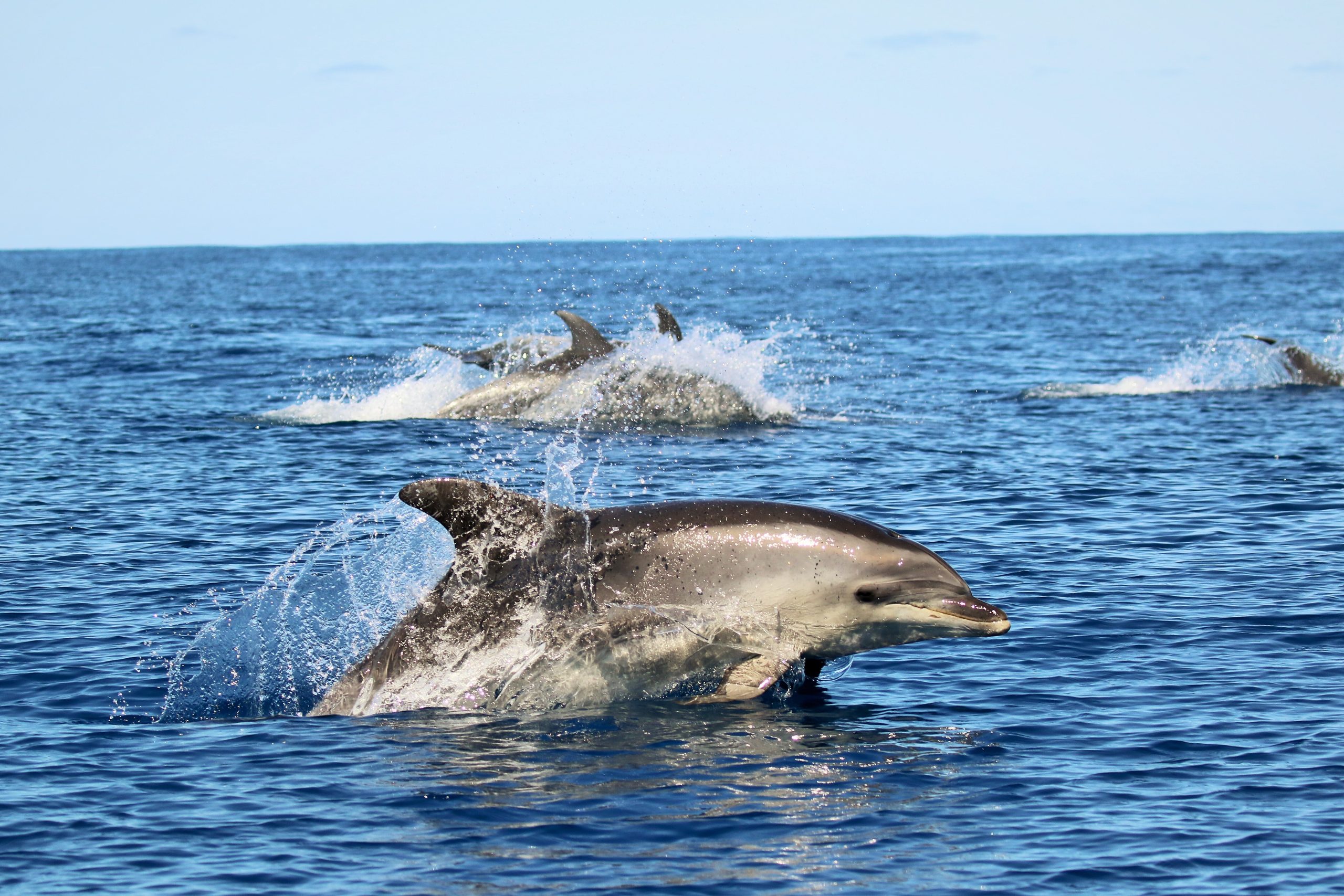
Based on what has been said below, some scientists from The Wild Dolphin Project and Georgia Tech in Atlanta were inspired to join efforts in 2010 and work with wild Atlantic spotted dolphins in the Bahamas to create a human-dolphin translating machine, called a “CHAT box” (an acronym for “Cetacean Hearing And Telemetry”), a computer that stores several coded artificial whistles assigned to various objects.
The use of this machine proves that the dolphins have the ability to learn new “words” and associate them with new objects that are not naturally part of their environment and is the first step toward a better understanding of cetacean communication. You can learn more about this project on its website: CHAT Research and listen to common dolphin sounds.
Threats to Cetaceans’ Communication

Given that sounds play an essential role in vital behaviors such as foraging, spatial orientation, social interactions, or breeding, cetaceans find themselves to be very sensitive to loud noises.
Various forms of human activity at sea such as boating, seismic surveys, or military exercises produce noise levels that interfere with communication and that can have harmful effects on whales and dolphins, altering both their behavior and physiology.
Humpback whales, for example, have been observed to avoid certain feeding grounds in the presence of noise sources (Risch et al., 2012), while deep divers such as different species of beaked whales have been found to mass strand when associated with military exercises (Fernandez, 2004; Frantzis, 2004). It is therefore of essential importance to continue learning about how these animals use sounds and how noises affect them in their environment, in order to be able to design and implement the best management procedures for their protection.
Written by Ramona Negulescu
References
Fernandez, A. (2004). Pathological findings in stranded beaked whales during the naval military manoeuvers near the Canary Islands. ECS Newsletter 42(Special Issue):37-40
Frantzis, A. (2004). The first mass stranding that was associated with the use of active sonar (Kyparissiakos Gulf, Greece, 1996). In P. Evans & L. Miller (Eds.), Proceedings of the Workshop on Active Sonar and Cetaceans Held at the European Cetacean Society 17th Annual Meeting, 8 March 2003 (European Cetacean Society Newsletter, 42 [Special Issue], 14-20)
Ketten, D., The University of Rhode Island (Producer) (2018) Sound reception in Marine Mammals [Video webinar] Retrieved from https://dosits.org/decision-makers/webinar-series/webinars-2018/sound-reception-mammals2018/
Photo: Dr. Joy Reidenberg. Adapted from Joy S. Reidenberg and Jeffrey T. Laitman. 2007. Discovery of a low-frequency sound source in Mysticeti (baleen whales): Anatomical establishment of a vocal fold homolog. The Anatomical Record. Volume 290, Issue 6, pages 745–759. Retrieved from
The Wild Dolphin Project (2010) [Website] Retrieved on the 16th of April 2020 from http://www.wilddolphinproject.org/our-research/chat-research/

